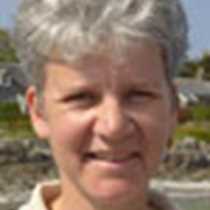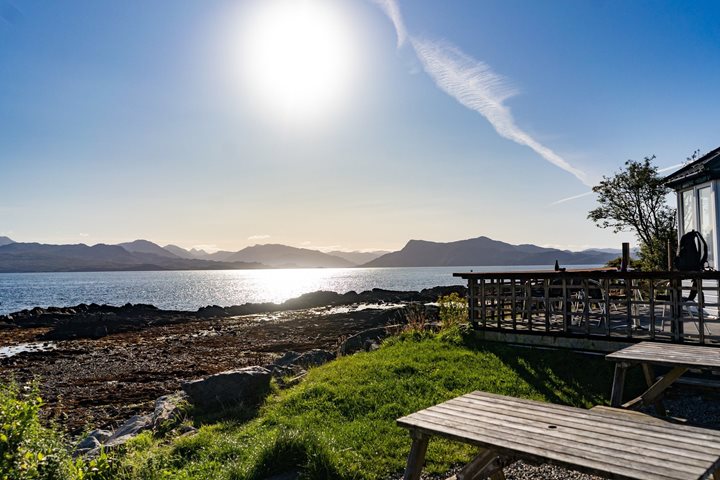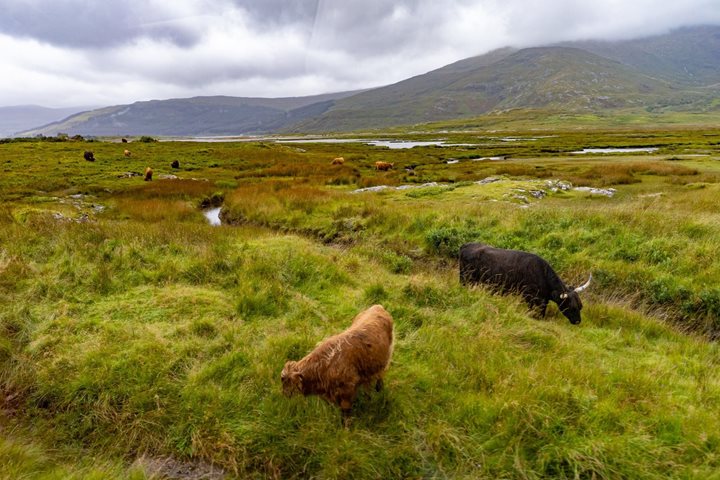We woke to a sunny summer morning in Inverness, where we had spent the night alongside in the highest of the Muirtown locks overlooking the city and its red sandstone castle. It was a superb beginning to our first full day of exploring Scotland. We made an early start by touring the historic center of Inverness by bus, viewing en route the fast-running salmon-rich River Ness and the immaculate golf courses. Konia gave a fascinating insight into Inverness today and in the past, and then continued to brief us on the background and significance of the Jacobite cause in British history and the events at the battle of Culloden before we visited the battlefield itself.
In April 1746 Culloden saw the last pitched battle on British soil and was the final, decisive showdown between the Jacobite army, led by Bonnie Prince Charlie, and the British Government troops led by the infamous Duke of Cumberland. We trod the battlefield itself where Iris gave an on-site explanation of events and then entered the visitor center to see the surround-screen video presentation and tour the exhibition galleries.
From there we drove all of two miles to Clava Cairns, crossing a narrow “Weak Bridge” over the River Nairn. No problem for Graham Urquhart, our highly skilled driver! More than 4,000 years ago, Bronze Age locals chose the flat river terrace to construct two hemispherical stone tombs, each designed for a single occupant and with the passage leading to the burial chamber precisely aligned on the setting sun on midwinter’s day, 21st December. Standing stones positioned around the burial cairns and the ring cairn indicate links with other megalithic monuments throughout Britain which used the “megalithic yard” as a common unit of measurement and were aligned on solar and lunar events and constellations. At Clava we were able to enter the tombs and touch the ancient rocks. Iris gave a brief presentation to explain the site and put it in context.
As no publications about Clava Cairns are available at the site, here is the website address from which you can download the material: www.historic-scotland.gov.uk. Search for Clava Cairns and click on the PDF Visitor’s Guide to Balnuaran of Clava (1.8 KB).
Returning to Lords of the Glens, we enjoyed lunch after a busy morning and Captain Jim set sail southwestwards towards Loch Ness. The skies had clouded over by now, but it was still dry and fairly calm as we entered the most famous lake in Scotland. Despite our keen lookout, we failed to spot “Nessie” but did get an excellent view of Urquhart Castle ruins.
As we cruised the 23-mile length of Loch Ness to our overnight berth at Fort William, Iris gave a presentation on Scottish history, aiming to explain how Scotland and England became united as Great Britain in 1707. Along the way she diverted into subjects such as “Nessie,” the sporting talents of Mary Queen of Scots and the reason for the late Queen Mother’s refusal to visit the University of Glasgow after 1951.
We tied up at about 4:30 p.m. at the top of the flight of four locks. Our ship was the main tourist attraction in Fort William as visitors from many countries watched Captain Jim and his crew maneuvering the vessel with only inches to spare. Activities then included kayaking on the canal, an energetic country walk with Konia, a village exploration walk with Expedition Leader Steve, or a photographic stroll to find rare breeds of farm animals with Stewart and Iris.
As is traditional on Lindblad-National Geographic expeditions, we met in the bar for Recap over a cocktail and a briefing for the next day before sitting down to dine and discuss the day’s events.









